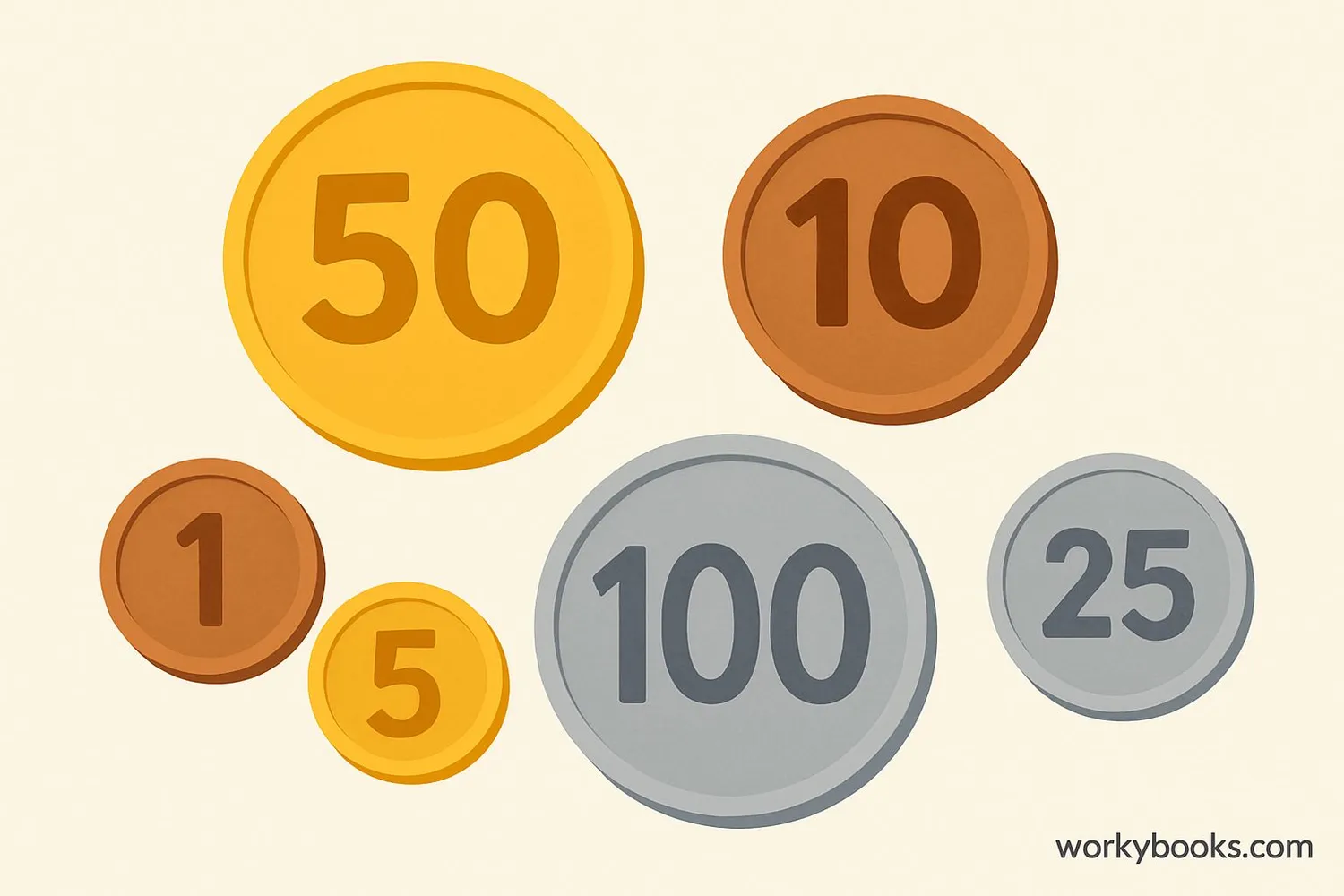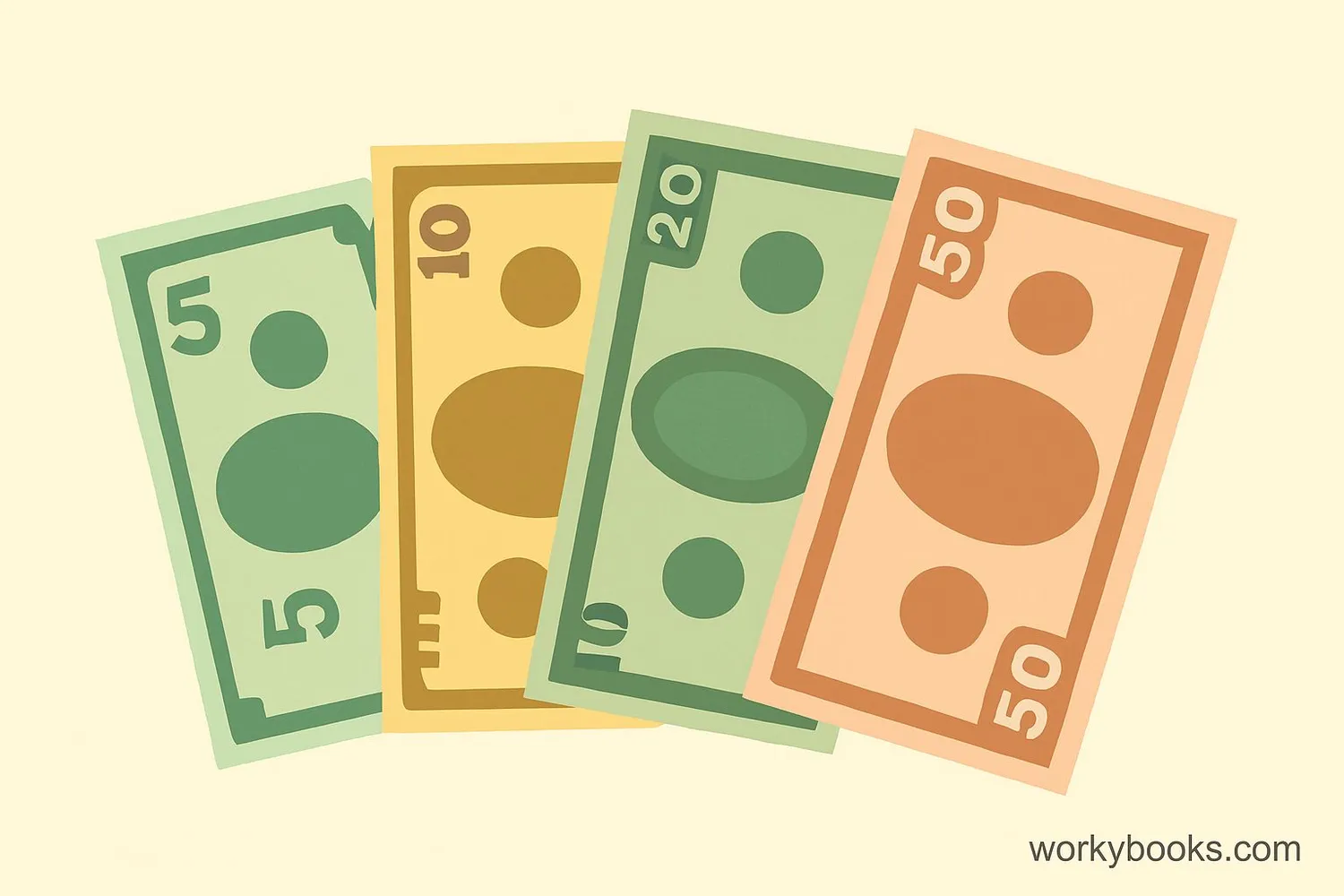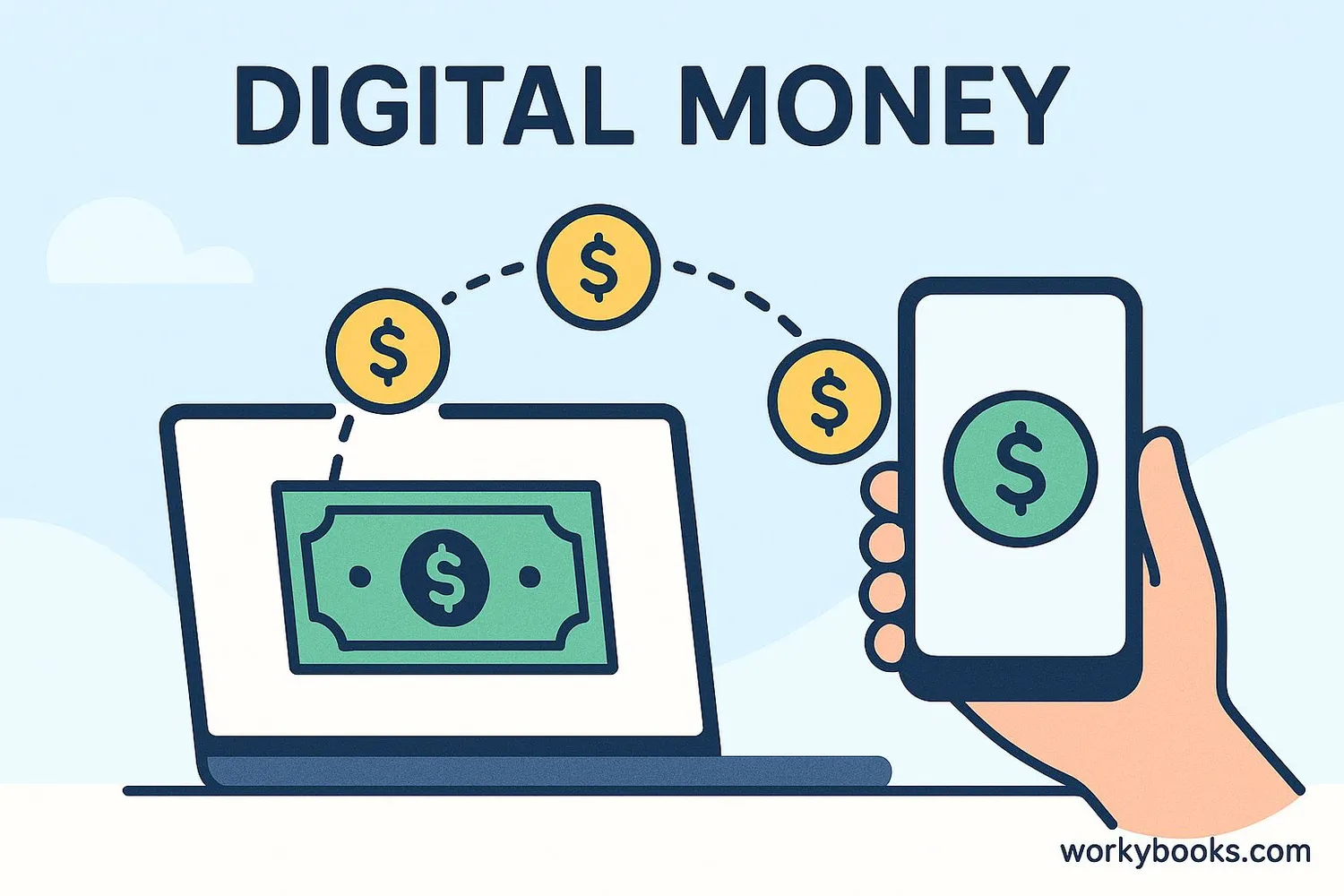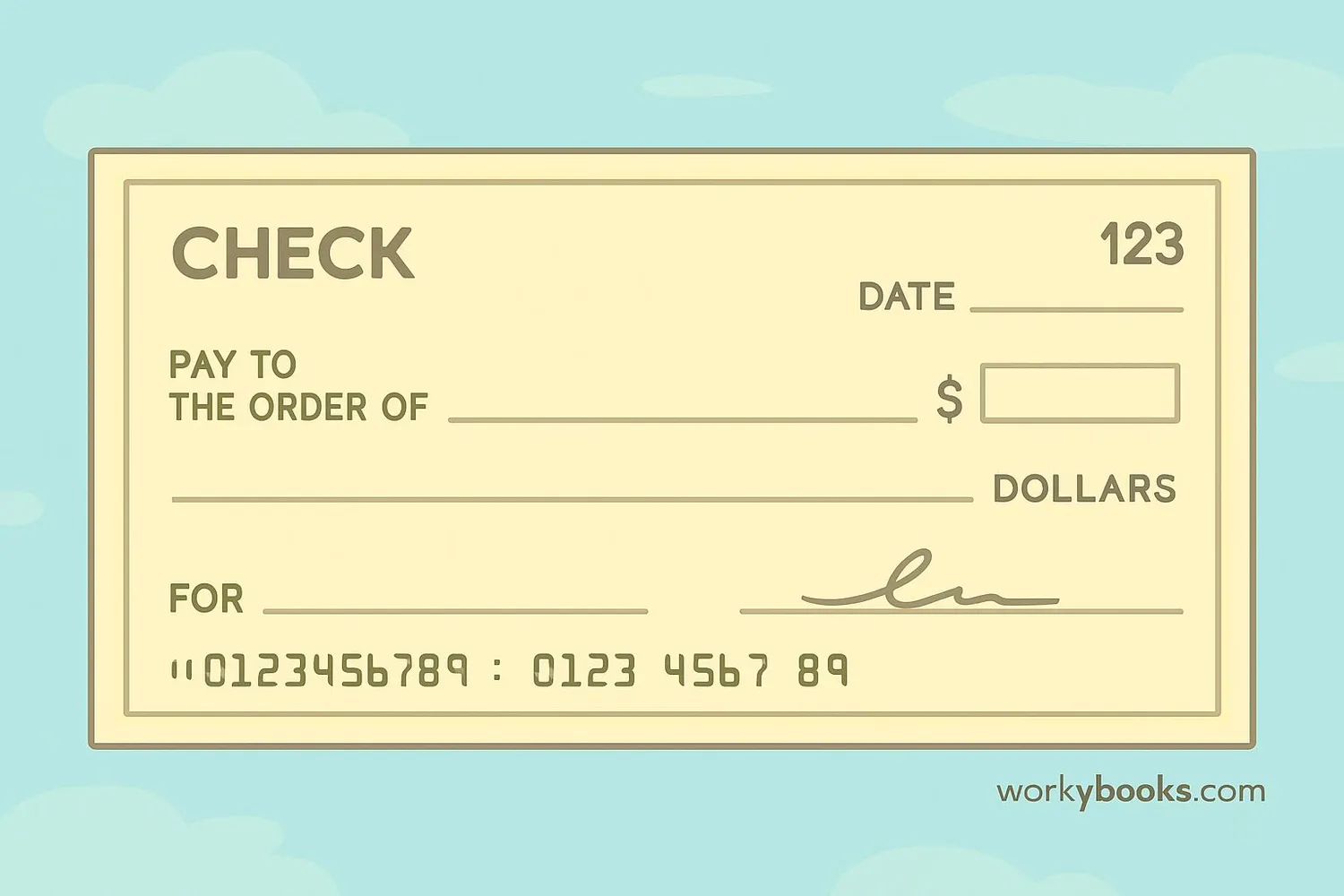Money - Definition, Examples, Quiz, FAQ, Trivia
Learn about currency, counting money, and financial literacy with easy explanations and practice activities
What is Money?
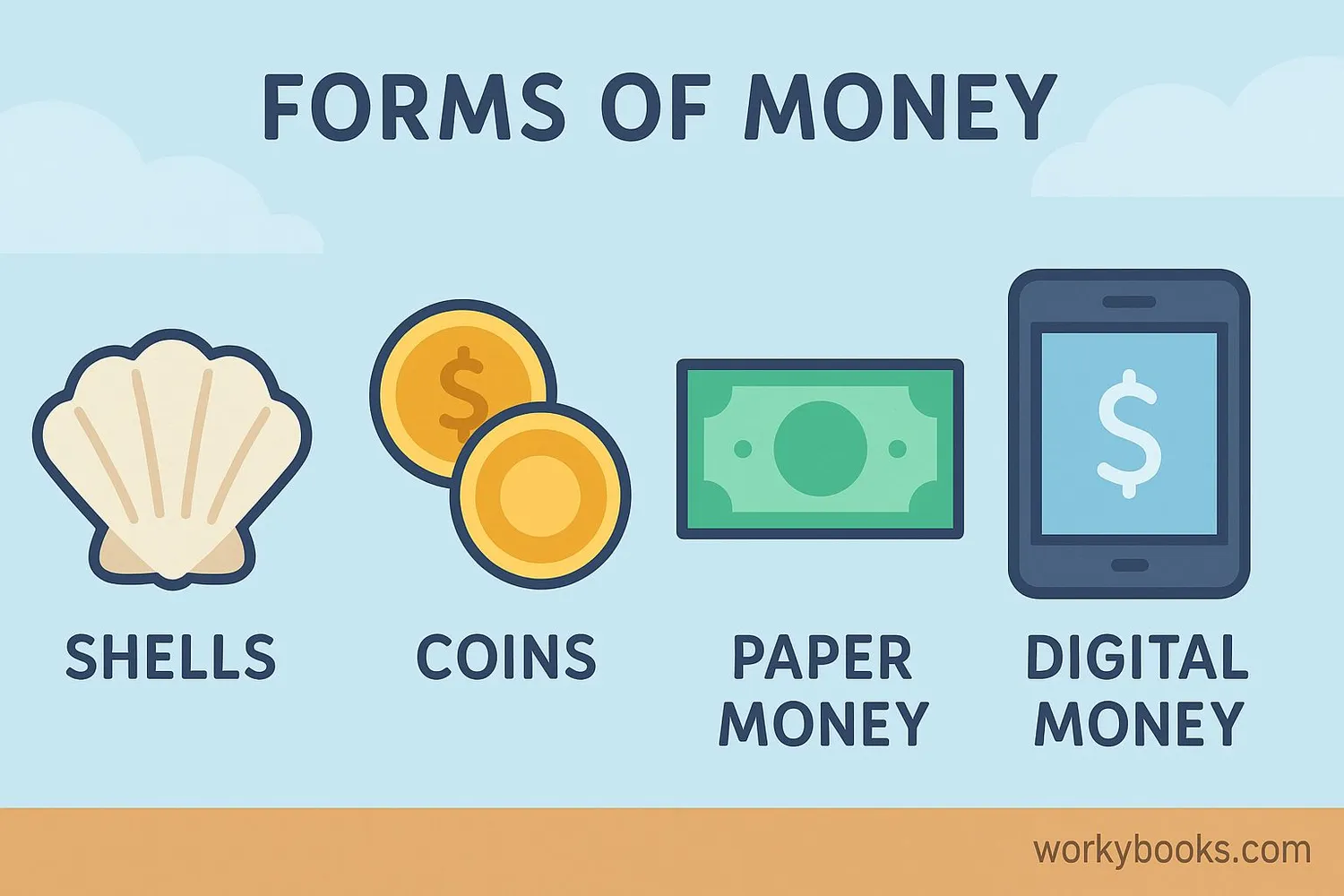
Money is something people use to buy goods and services. It's a way to exchange value between people. Long ago, people used to trade or barter goods directly - like trading chickens for wheat. But this was complicated because not everyone wanted the same things.
Money solved this problem by providing a common item that everyone would accept in exchange for goods and services. Today, we use coins, paper bills, and even digital money to buy what we need.
Money has three main jobs:
1. It's a medium of exchange - we use it to trade for things we want
2. It's a store of value - we can save it to use later
3. It's a unit of account - it helps us measure and compare the value of different things
Key Concept
Money makes trading easier because everyone agrees on its value and accepts it in exchange for goods and services.
Types of Money
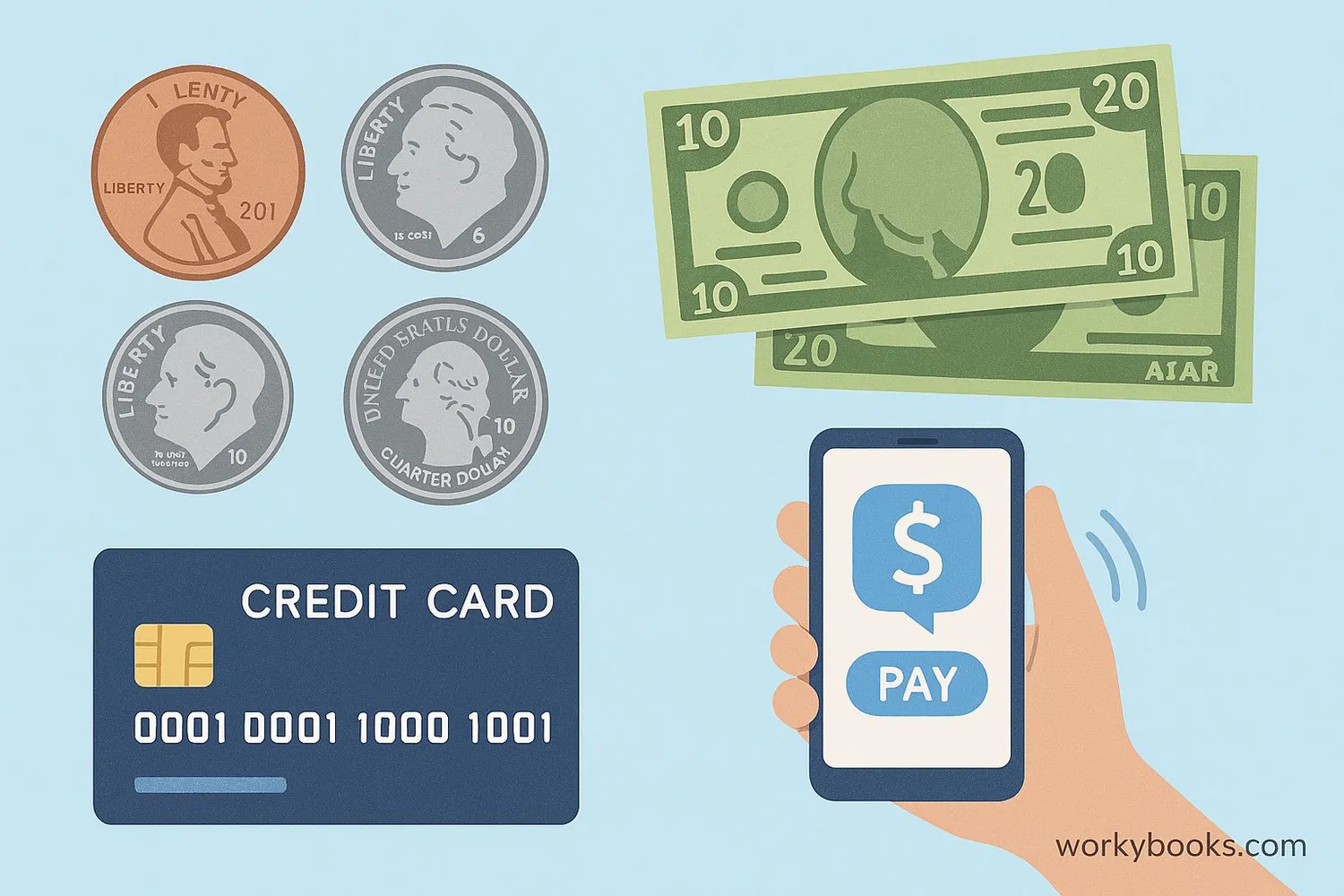
Money comes in different forms. The most common types are:
Coins
Metal money with different values based on size and material
Bills
Paper money with different values printed on them
Digital Money
Money in bank accounts or digital payment apps
Checks
Paper instructions to banks to transfer money
In the United States, we use these coins:
• Penny = 1 cent
• Nickel = 5 cents
• Dime = 10 cents
• Quarter = 25 cents
And these paper bills:
• $1 bill
• $5 bill
• $10 bill
• $20 bill
• And higher values
Remember
Different countries have different money with unique names and designs, but they all serve the same purpose.
Currency Around the World
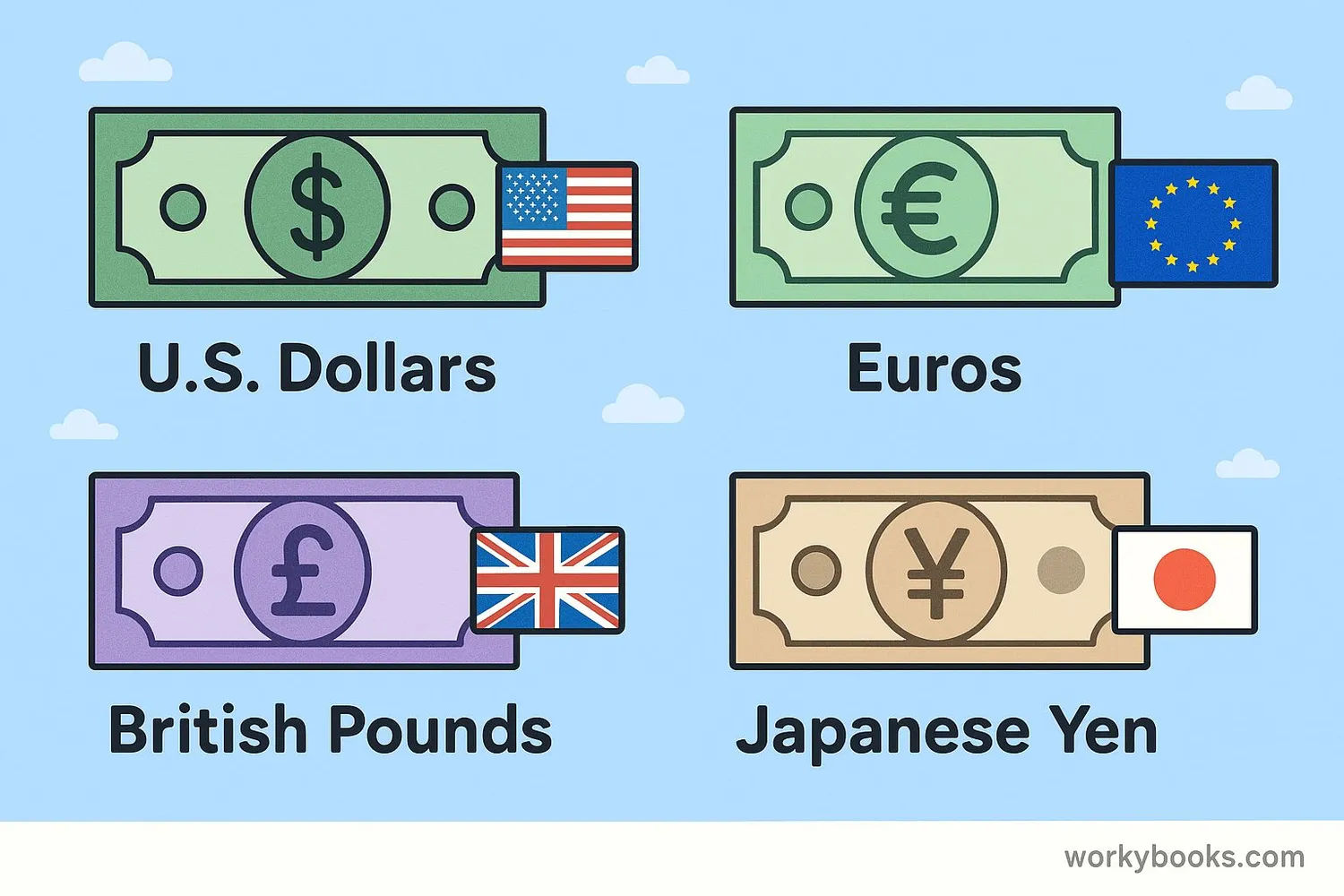
Different countries use different types of money, called currencies. Each currency has its own name and value. When people travel to other countries, they often need to exchange their money for the local currency.
Here are some examples of currencies from around the world:
| Country | Currency Name | Symbol |
|---|---|---|
| United States | Dollar | $ |
| European Union | Euro | € |
| United Kingdom | Pound | £ |
| Japan | Yen | ¥ |
| Canada | Dollar | C$ |
| Mexico | Peso | $ |
| India | Rupee | ₹ |
The value of different currencies changes daily. This is called the exchange rate. For example, one US dollar might be worth 0.85 euros one day and 0.87 euros the next day.
People who travel to other countries need to know the exchange rate so they know how much their money is worth in another country.
Did You Know
Some countries, like those in the European Union, share the same currency even though they are different countries.
Counting Money
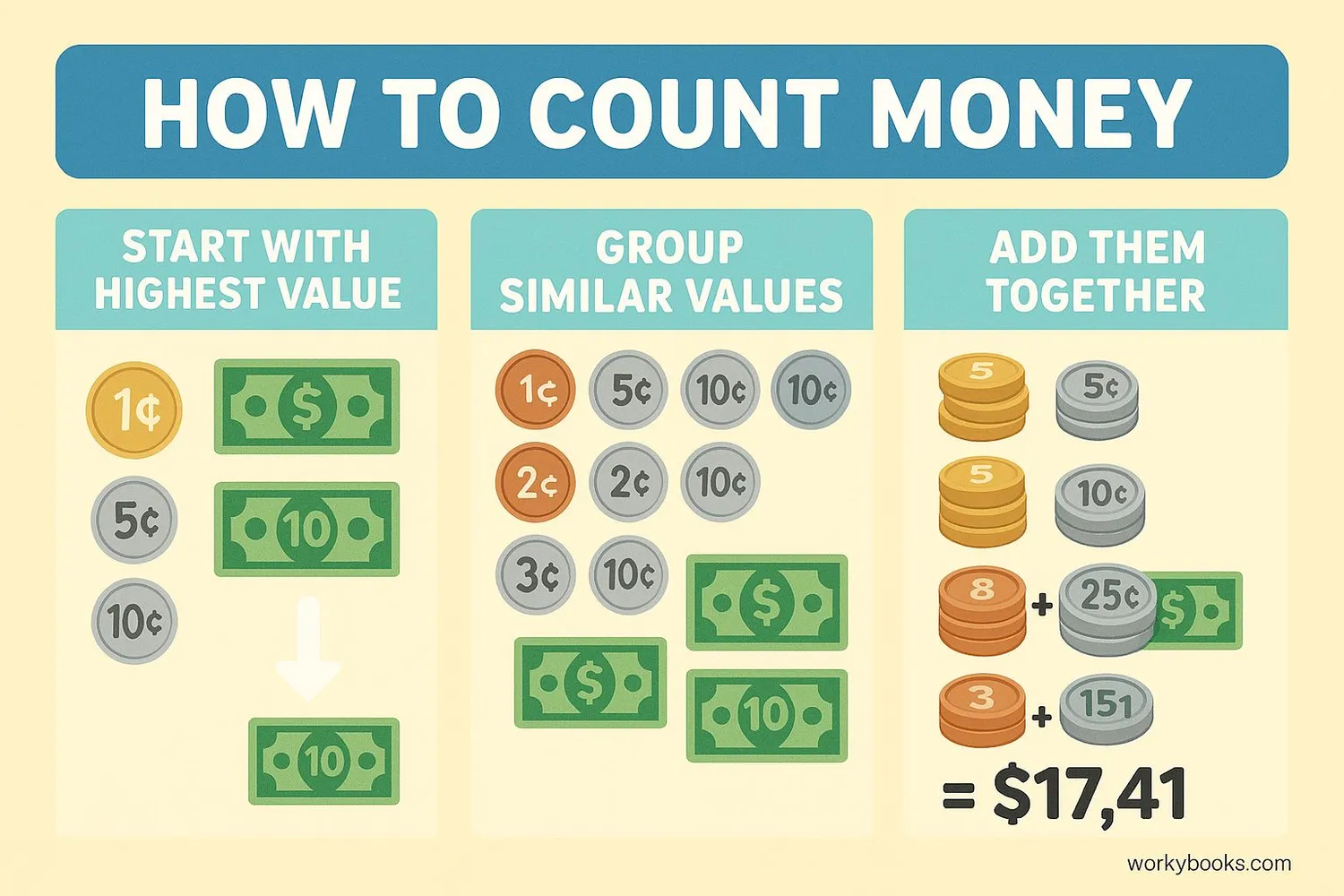
Counting money is an important math skill. When counting money, it's helpful to:
1. Sort coins and bills by value
2. Start with the highest values first
3. Count similar values together
4. Add all the values together
Remember these important values:
100 cents = 1 dollar
Penny = 1 cent
Nickel = 5 cents
Dime = 10 cents
Quarter = 25 cents
Money Counting Tip
Start with quarters, then dimes, then nickels, then pennies.
Let's practice with an example:
If you have 2 quarters, 3 dimes, 1 nickel, and 4 pennies:
Quarters: 2 × 25¢ = 50¢
Dimes: 3 × 10¢ = 30¢
Nickel: 1 × 5¢ = 5¢
Pennies: 4 × 1¢ = 4¢
Total: 50¢ + 30¢ + 5¢ + 4¢ = 89¢
That's 89 cents, or 0.89 dollars.
Practice Tip
Use real or play money to practice counting. Group coins by type and practice adding them together.
Value of Money
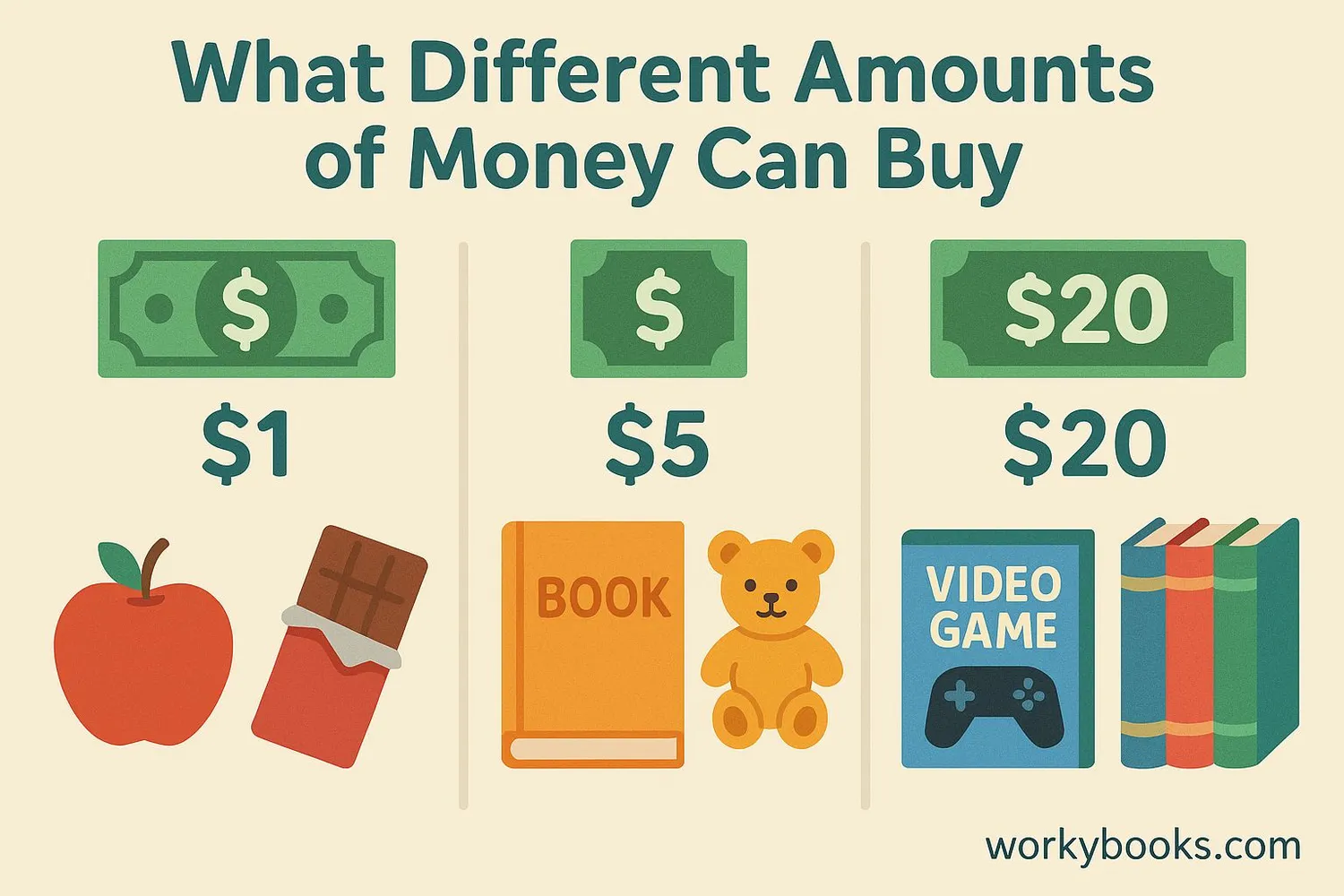
The value of money is what it can buy for you. Understanding the value of money helps us make smart choices about how to spend it.
Money has different value in different situations:
• A dollar might buy a candy bar or a small toy
• Five dollars might buy a book or a meal
• Twenty dollars might buy a video game or a shirt
The value of money can also change over time. This is called inflation. When there's inflation, the same amount of money buys fewer things than it did before.
Financial Literacy
A good money plan includes saving some, spending some, and sharing some.
Being smart with money means:
Earning: Getting money by doing work or chores
Saving: Keeping money for future needs or wants
Spending: Using money to buy things you need or want
Sharing: Giving money to help others
Creating a simple budget can help you manage your money wisely. A budget is a plan for how you will use your money.
Money Smart
Before buying something, ask yourself: "Do I need this, or do I want this?" This helps make smart spending choices.
Money Knowledge Quiz
Test your money knowledge with this 5-question quiz. Choose the correct answer for each question.
Frequently Asked Questions
Here are answers to common questions about money:
Money Trivia
Discover interesting facts about money:
First Coins
The first coins were created around 600 B.C. in Lydia (now part of Turkey). They were made from electrum, a natural mixture of gold and silver, and had stamped markings to show their value.
Dirty Money
Paper money can carry thousands of germs because it passes through so many hands. Some studies have found that most dollar bills contain traces of bacteria and other microorganisms.
Money Production
The Bureau of Engraving and Printing produces about 38 million notes a day with a face value of approximately $541 million. Nearly 95% of the notes printed each year are used to replace notes already in circulation.
Largest Bill
The largest denomination of currency ever printed by the Bureau of Engraving and Printing was the $100,000 Gold Certificate, Series 1934. These notes were used only for transactions between Federal Reserve Banks.


